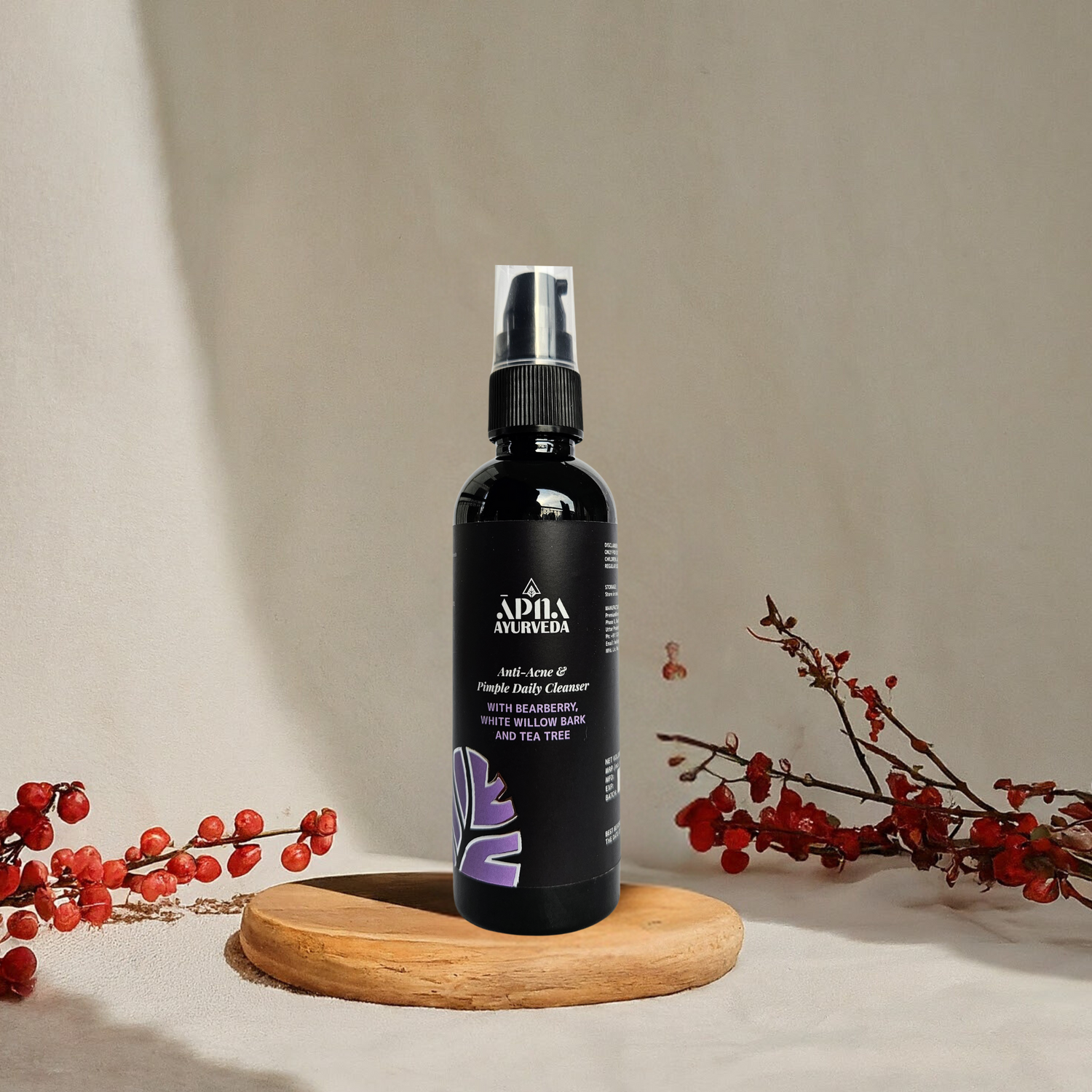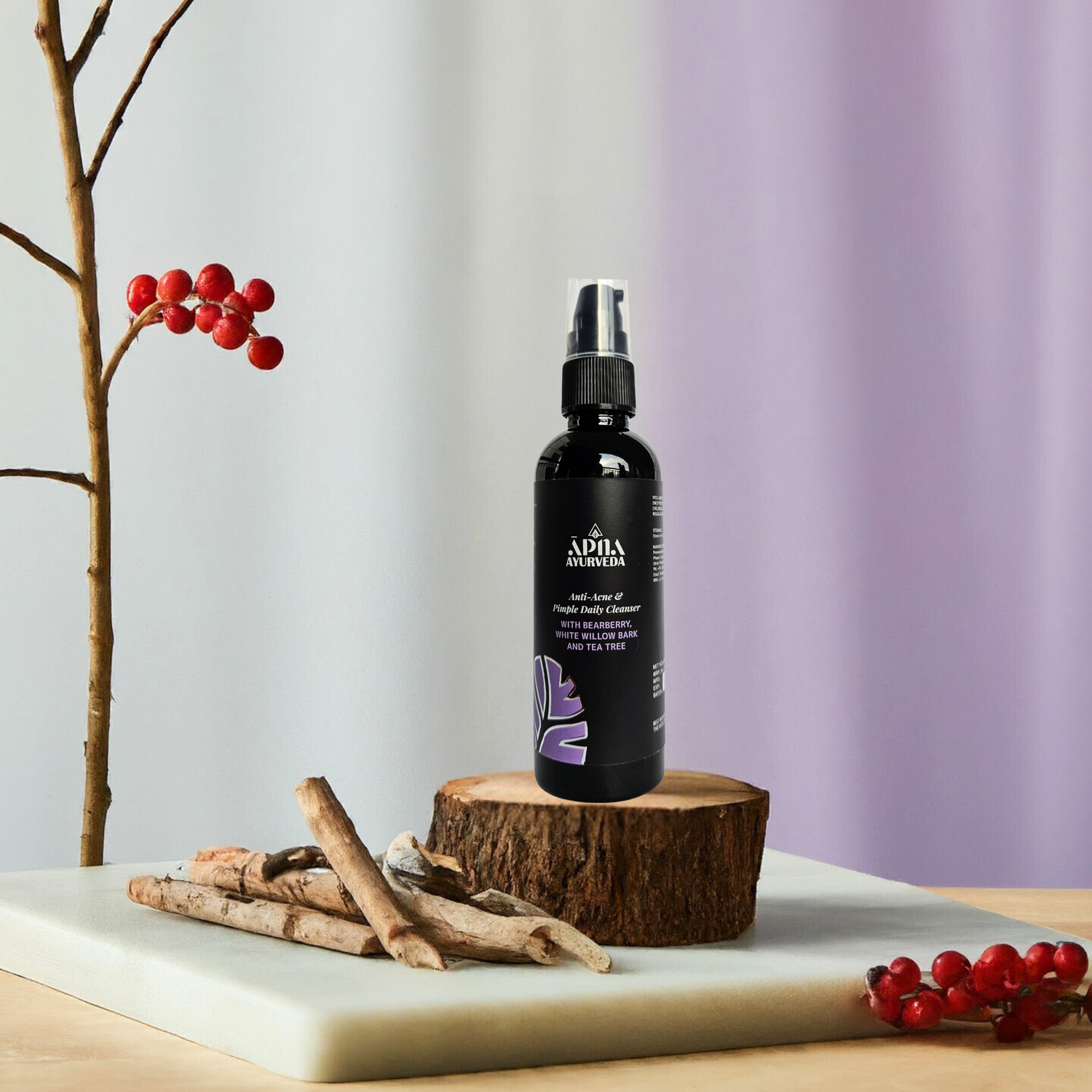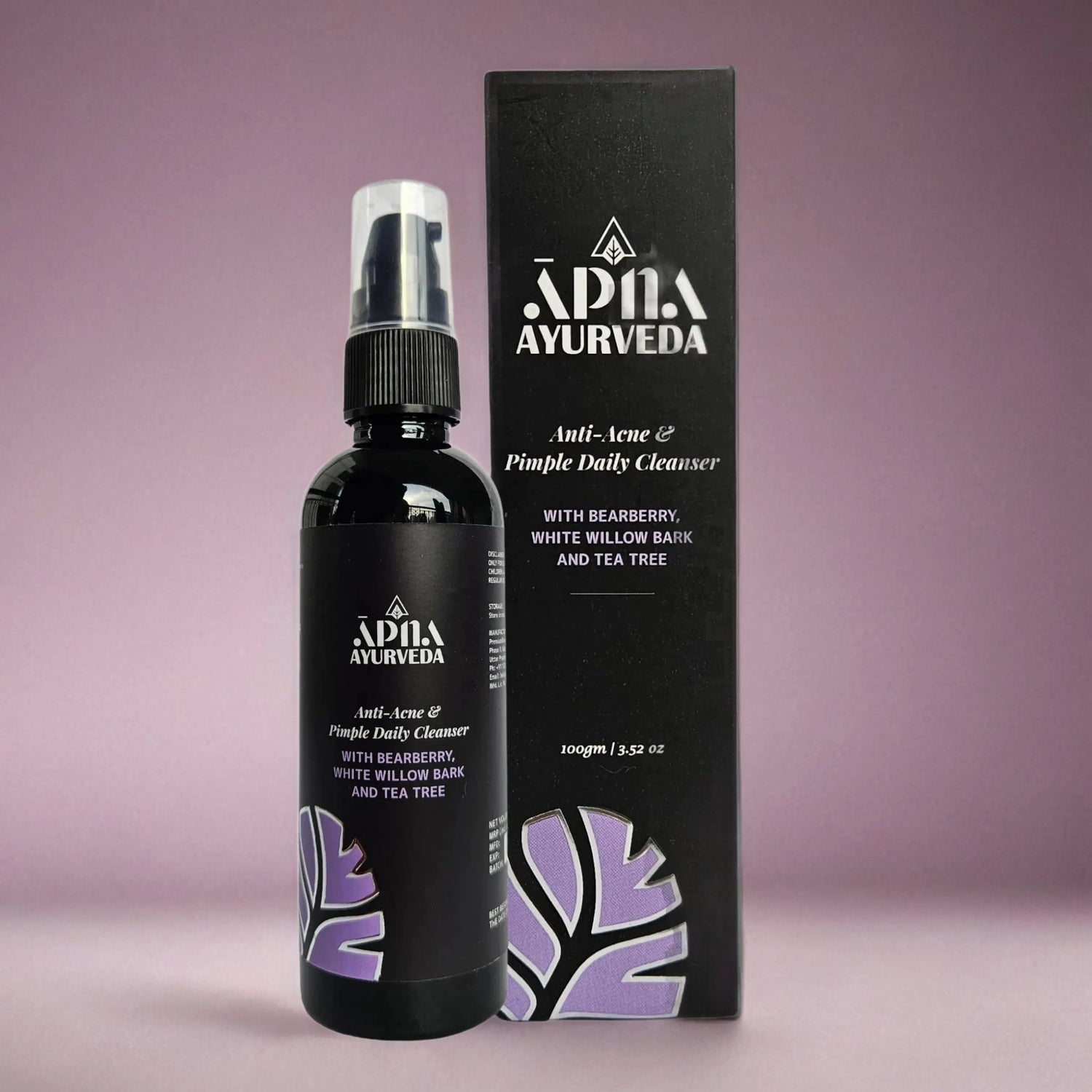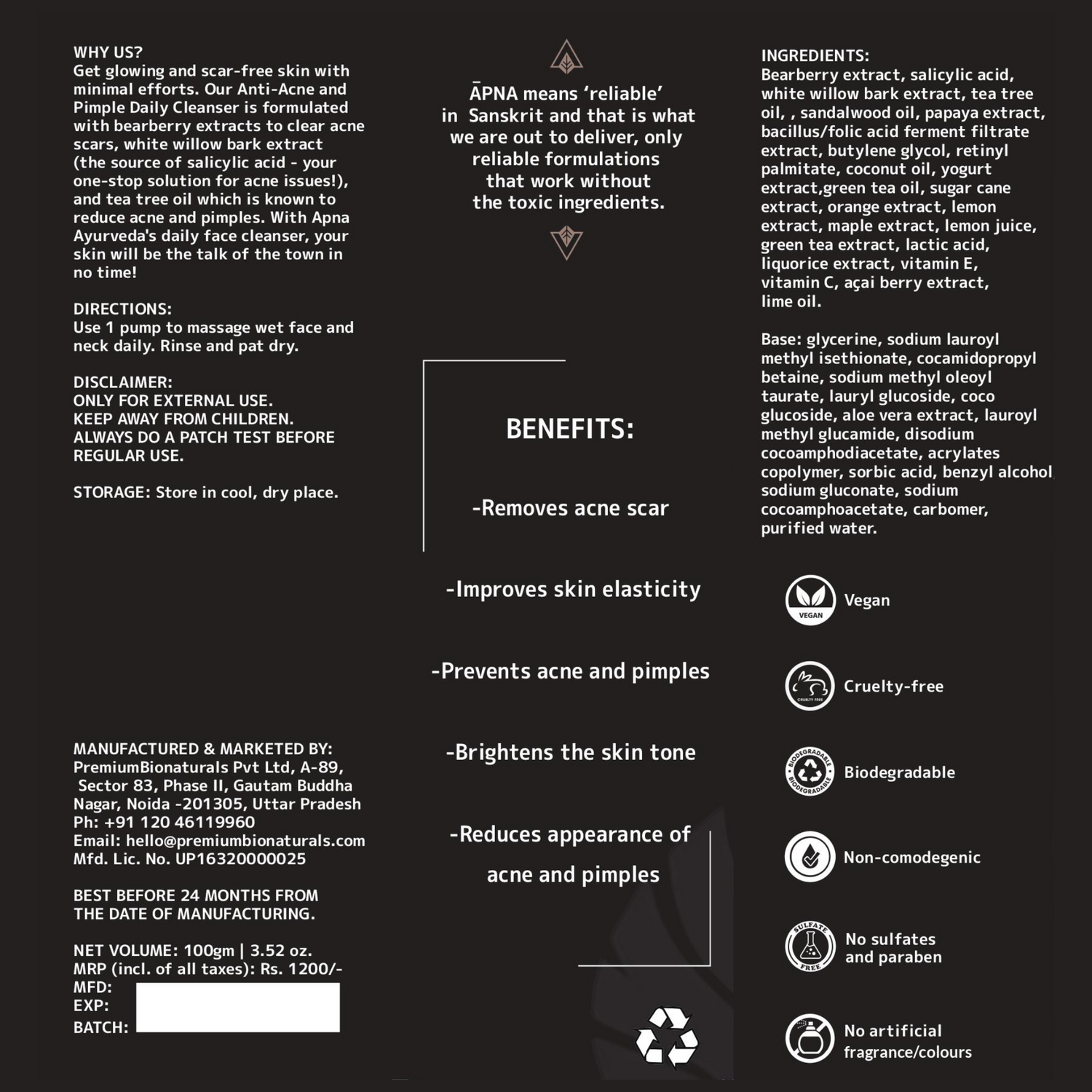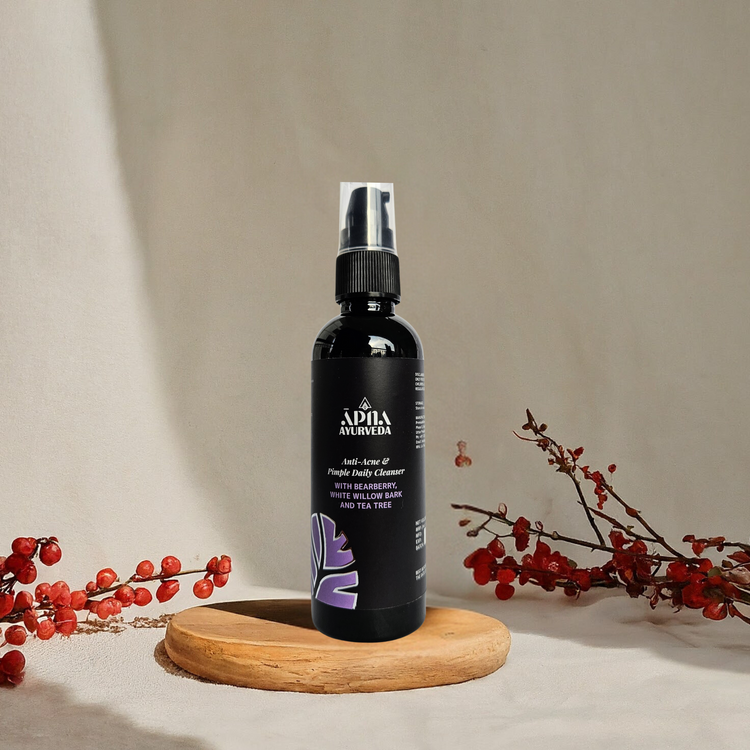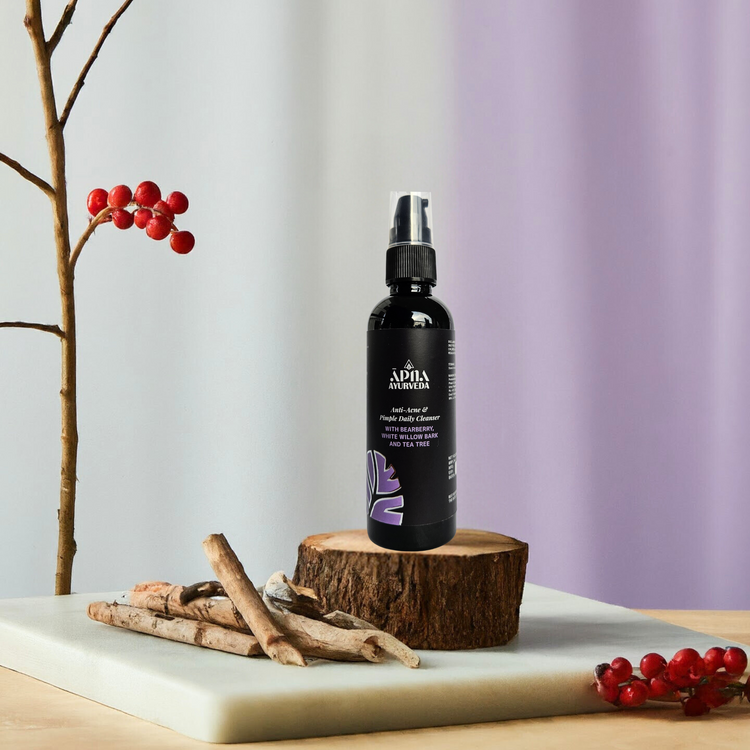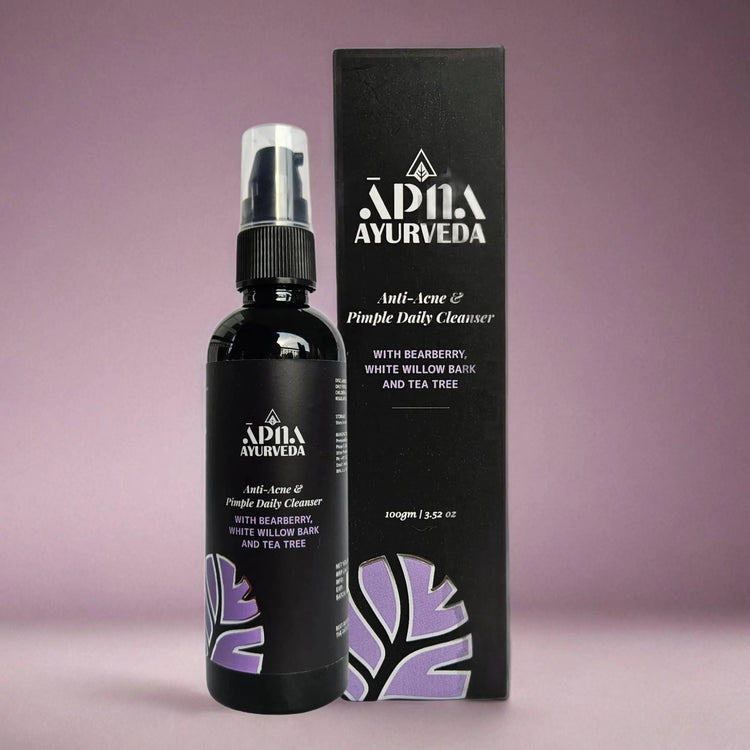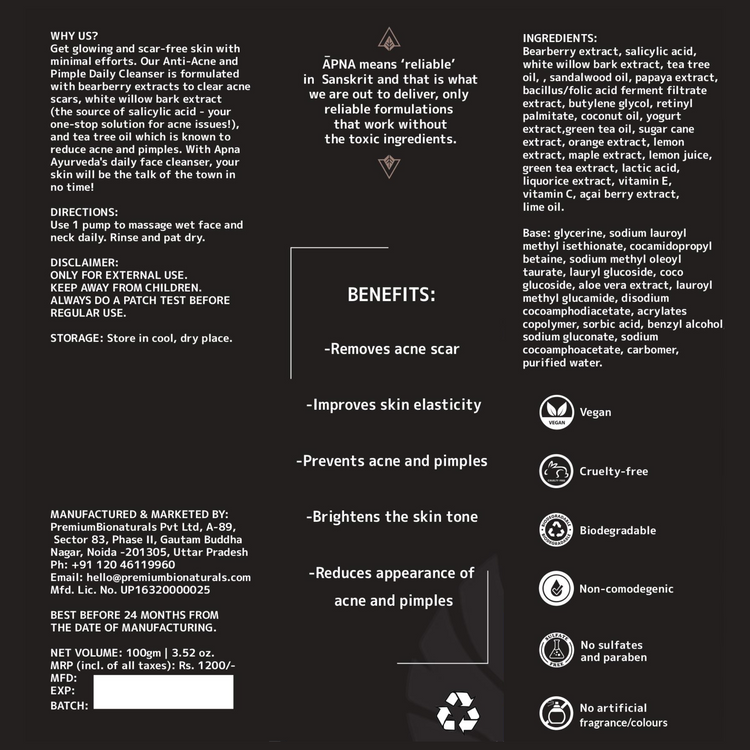Pimples? Yes well we all fear it. The who destroys all our happy moments in pictures. But we are here to break some misbeliefs! Acne and pimples are often used interchangeably but to be honest they are very different in their core meaning. The main difference between acne and pimples is that acne is a skin condition, while pimples are a symptom of acne. Someone who has acne-prone skin will experience pimples as a part of their condition, however not everyone who gets the occasional pimple has acne-prone skin.
Whether your skin pores get clogged due to sebum control issues or you notice inflammation after a breakout, we’re here to simplify for you. Let’s break down pimples and acne to help you treat your skin right and avoid infections caused by squeezing or picking pimples.
Common problems in distinguishing between acne and a pimple
- Under your skin, your pores are connected to glands that make an oily substance known as sebum.
- The glands and pores are connected by a canal known as a follicle that has a thin hair that grows out to the skin’s surface.
- When sebum and dead skin cells clump together, they form a plug in the follicle.
- Bacteria in the plug cause inflammation, leading to red pimples and acne.
Understanding the difference between acne and a pimple can be tricky, but knowing that acne is the condition and pimples are the symptoms caused by factors like plugged pores helps you target the right treatment for your skin concerns.
What is an Acne?
Acne is a common skin condition that occurs when hair follicles become clogged with oil and dead skin cells, causing pimples or other lesions. While many confuse acne with pimples, acne is the broader term for a skin disorder caused by plugged pores, excess sebum control, and changes in hormonal levels. Oily skin types are the biggest sufferers of these devils!
- Acne typically appears on your face, forehead, chest, upper back, and shoulders because these areas of skin have the most oil (sebaceous) glands.
- Hair follicles are connected to oil glands. The follicle wall may bulge and produce a whitehead. Or the plug may be open to the surface and darken, causing a blackhead. A blackhead may look like dirt stuck in pores.
Causes:
Four main factors cause acne:
- Excess oil (sebum) production
- Hair follicles clogged by oil and dead skin cells
- Bacteria
- Inflammation
Acne is more than just a few blemishes. It’s a chronic condition that requires prolonged care with products like our Anti-Acne Pimple Daily Cream infused with Neem & Tea tree oil that helps fight acne-causing bacteria and reduces skin inflammation.
What is a Pimple?
Pimples are raised red spots with a white centre that develop when blocked hair follicles become inflamed or infected with bacteria. Blockages and inflammation deep inside hair follicles produce cystlike lumps beneath the surface of your skin. Other pores in your skin, which are the openings of the sweat glands, aren't usually involved in acne.
- Pimples are very common. Some researchers suggest that pimples affect nearly everyone at some time during their lives.
- They’re most common during adolescence, but adults may have them, too.
Causes:
Clogs or inflammation in your sebaceous glands cause pimples to form. Clogs and inflammation can occur as a result of:
- Increased sebum (oily material produced by the sebaceous gland) production.
- Abnormal formation of keratin (the protein that helps make your hair, skin, and nails).
- Increased presence of bacteria on your skin that causes pimples.
While pimples are early symptoms of acne, they can also appear on their own due to external factors. Keep your pores clear with our tea-tree-infused Anti-Acne Pimple Daily Cleanser, which can help you reduce breakouts, and remove acne scars and dark spots.
How to understand whether you have a pimple or an acne?
The clearest way to distinguish between acne and pimples is to understand that pimples are a symptom of a condition, whereas acne is the condition itself.
- Someone who has acne-prone skin will experience pimples as a part of their condition, however not everyone who gets the occasional pimple has acne-prone skin.
- If you get pimples often, especially several at once repeatedly, you may have acne. In other words, acne is the skin condition that causes pimples.
Best Ingredients for Treating Acne
Some of the best ingredients to treat acne are:
- Salicylic acid:- Salicylic acid is an acne treatment. Salicylic acid is a beta-hydroxy acid that acts as a chemical exfoliator. Exfoliating is a way of removing acne blockages that have already formed within your hair follicles, such as whiteheads and blackheads. Our Gentle Daily Cleanser has white willow bark extracts which is a natural source of salicylic acid, it clears pores and prevents acne.
- Tea tree oil:- Tea tree oil comes from the leaves of the tea tree (Melaleuca alternifolia). Due to its antibacterial properties Tea Tree oil is commonly used to treat acne and dandruff. Get clear skin with our Anti Acne Cream infused with tea tree essential oil.
- Benzoyl peroxide: - Benzoyl peroxide is a well-known ingredient for fighting acne. Benzoyl peroxide works to treat and prevent acne by killing bacteria underneath the skin, as well as helping the pores shed dead skin cells and excess sebum (oil).
Skin types most affected by acne
Acne appearance depends on each skin type, accordingly, acne is quite common in oily skin. Oily skin has an excessive amount of sebum that is produced and clogs pores. This is the cause of the formation and development of acne, especially acne.
Dry skin types can still experience acne. Some of the reasons that can explain this condition are environmental factors or poor skin care habits that cause skin irritation and clogged pores. Accordingly, learning and knowing the type of skin you own will help you have a better and more effective skin care direction for acne.
Therefore, not everyone with dry and oily skin can develop acne. Everyone will experience and develop acne in their lifetime because there are many different causes and factors.
How to Build a Skincare Routine for Acne?
Acne prone skin requires special treatment, the slightest change in routine and there goes another breakout! We will be very transparent here without any gimmicks, all you need is three steps and three products! That’s it. No 10 step routine is required which to be honest is a hassle to maintain in the longer run.
Cleanse > Treat & Moisturise > Protect
- Cleanse: Wash your face twice a day with a gentle cleanser and preferably one with salicylic acid or tea tree oil.
-
Treat & Moisturise: If you have severe acne try using acne treatment creams which target on your zits and dark spots and helps fade them away over time. Do not pick them at all!
Now a lot of you think acne is triggered by oil hence you should skip moisturising your skin but that is where lies the problem! Acne can also be triggered from super dry skin. Do not skip moisturisation. Use a lightweight non-comedogenic gel based formula to skip excess oil production and there you go! - Protect: The holy grail of all skincare products, SPF! Do not forget this step at all! Sun exposure worsens acne and can lead to chronic problems.
What Kind of Food Regulations Can be Done to Help Acne?
Eating low-glycemic foods made of complex carbohydrates may reduce your chances of developing acne. Examples include:
- Whole grains
- Legumes
- Fruits and vegetables
- Potatoes
- Spinach and other dark green and leafy vegetables
- Tomatoes
Foods to avoid
- Dairy products
- Foods with a high glycemic index (GI) and a high glycemic load (GL).
Frequently Asked Questions:
Q1) Are pimples and acne the same?
A) No, pimples are an early sign of acne.
Q2) Do you need to see a doctor to treat acne?
A) Yes, you should see a doctor if you have acne that is severe.
Q3) Can ice remove pimples?
A) Ice can temporarily reduce the size and redness of pimples, but it won't cure them. Ice can help with inflammatory acne, but it's unlikely to work for noninflammatory pimples, like blackheads.
Q4) During which age breakouts are most common?
A) People of all ages can get acne, but it's most common in teenagers. Hormonal changes. Such changes are common during puberty or pregnancy.
Q5) How to remove pimples naturally?
A) You can use natural remedies like tea tree oil, aloe vera, or honey to reduce pimples.
Whether you’re battling a stubborn blemish or dealing with acne-prone skin, understanding the differences between acne and pimples can make a huge difference. A mix of home remedies, appropriate skin care, and expert advice may help you manage and tackle these problems.
Remember, it’s all about caring for your skin with the right products—like our vegan, and organic anti-acne products— and avoiding those bad habits like picking at your pimples! For chronic problems, always contact a dermatologist to get a better treatment. Remember that consistency is key to having clean, healthy skin.


